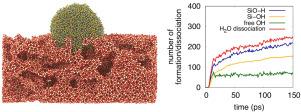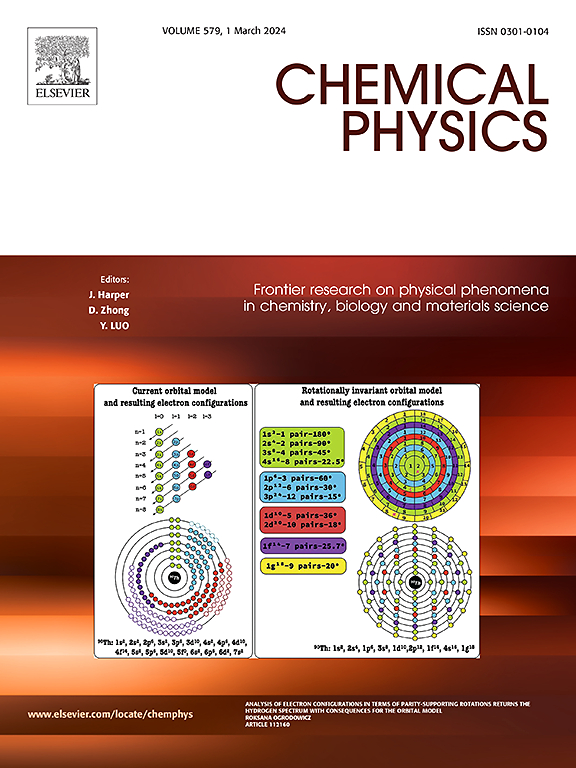冰粒对粗糙无定形二氧化硅表面的影响
IF 2
3区 化学
Q4 CHEMISTRY, PHYSICAL
引用次数: 0
摘要
我们利用分子动力学模拟分析了水冰颗粒与二氧化硅表面之间的碰撞。我们研究了平面和多孔表面。我们发现,二氧化硅样品中孔隙的存在和二氧化硅表面的诱导粗糙度对碰撞结果有很大影响。表面孔隙的存在增加了碰撞晶粒与二氧化硅样品的接触面积,从而也增加了反应产物的数量,即在二氧化硅表面形成的水解离产物和硅醇基团。如果孔隙大小与晶粒半径相当,则影响最大。此外,表面孔隙的存在允许水分子渗透到表面下,分子从碰撞的冰粒中喷射出来的能力增强,碰撞能量在样品中的消散受到阻碍。本文章由计算机程序翻译,如有差异,请以英文原文为准。

Ice-grain impact on a rough amorphous silica surface
Using molecular dynamics simulation, we analyze the collision between a water-ice grain and a silica surface. Both a flat and porous surfaces are studied. We find that the presence of pores in the silica sample and the induced roughness of the silica surface significantly influence the collision outcome. The presence of pores on the surface increases the contact area of the colliding grain with the silica sample, and consequently also the number of reaction products, i.e., water dissociation products and silanol groups formed at the silica surface. The effect is maximum if the pore size is of the order of the grain radius. In addition, the presence of pores on the surface allows for the penetration of water molecules under the surface, molecule ejection from the colliding ice grain is enhanced, and dissipation of the collision energy into the sample is hindered.
求助全文
通过发布文献求助,成功后即可免费获取论文全文。
去求助
来源期刊

Chemical Physics
化学-物理:原子、分子和化学物理
CiteScore
4.60
自引率
4.30%
发文量
278
审稿时长
39 days
期刊介绍:
Chemical Physics publishes experimental and theoretical papers on all aspects of chemical physics. In this journal, experiments are related to theory, and in turn theoretical papers are related to present or future experiments. Subjects covered include: spectroscopy and molecular structure, interacting systems, relaxation phenomena, biological systems, materials, fundamental problems in molecular reactivity, molecular quantum theory and statistical mechanics. Computational chemistry studies of routine character are not appropriate for this journal.
 求助内容:
求助内容: 应助结果提醒方式:
应助结果提醒方式:


